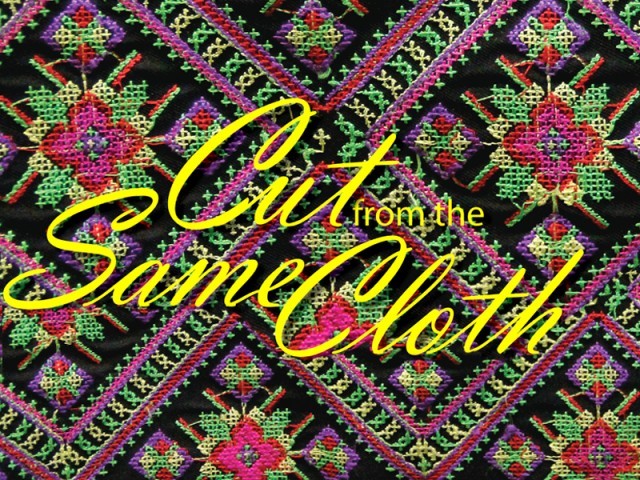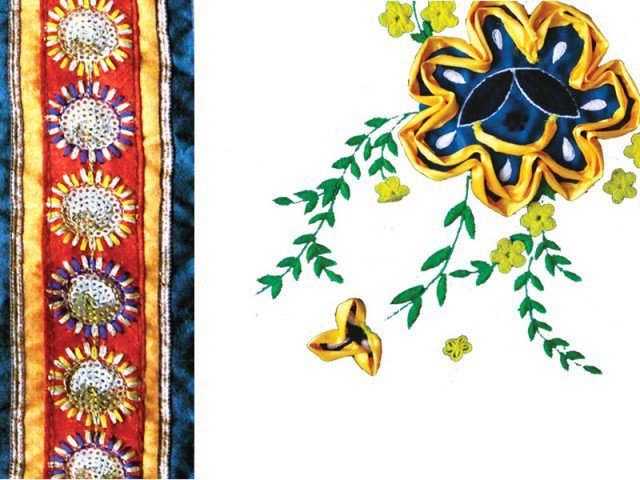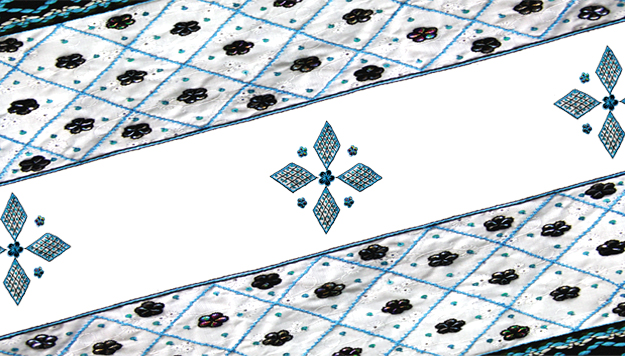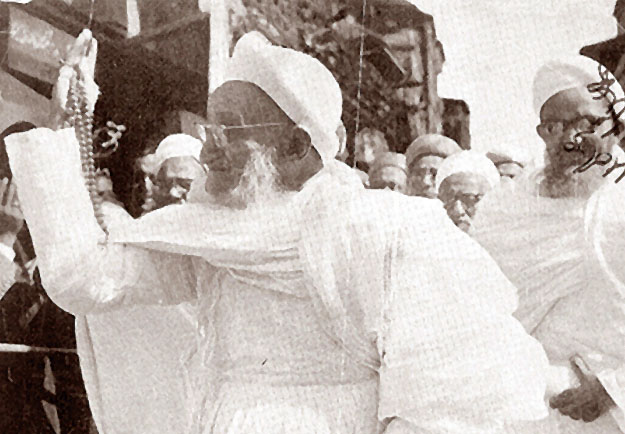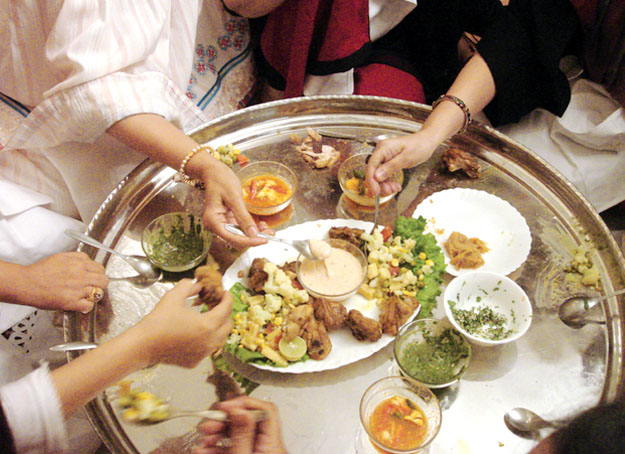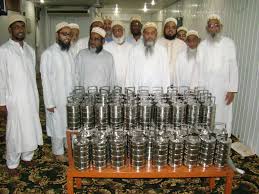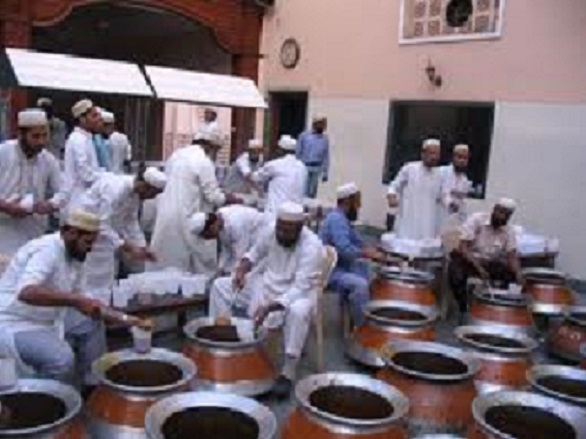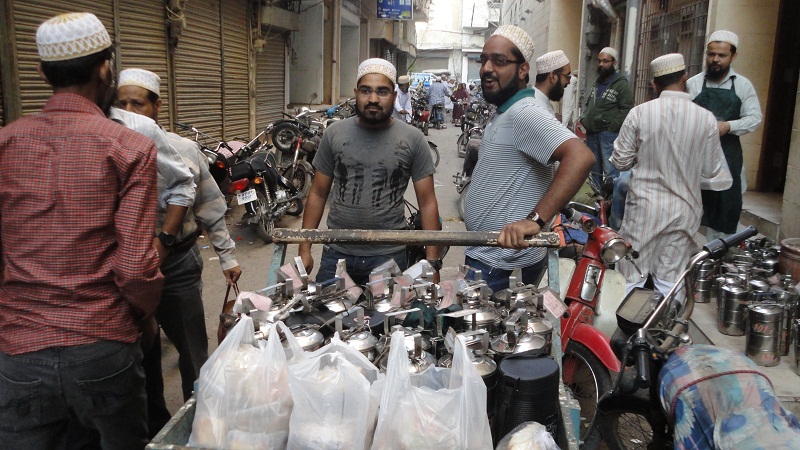Bohra
(→3 in 4 Bohra girls subjected to genital mutilation) |
|||
| (6 intermediate revisions by 2 users not shown) | |||
| Line 137: | Line 137: | ||
1 Crooke's edition of i/c;Z'j-^;/-y<5/;i(7«, ^ Memoir of Central India, ii. p. art. Bohra. in. 2 Moor's ///«(/« Infanticide, p. 168. | 1 Crooke's edition of i/c;Z'j-^;/-y<5/;i(7«, ^ Memoir of Central India, ii. p. art. Bohra. in. 2 Moor's ///«(/« Infanticide, p. 168. | ||
| + | ==Bohra/Bhora surnames== | ||
| + | (From ''People of India/ National Series Volume VIII.'' Readers who wish to share additional information/ photographs may please send them as messages to the Facebook community, [http://www.facebook.com/Indpaedia Indpaedia.com]. All information used will be gratefully acknowledged in your name.) | ||
| + | |||
| + | |||
| + | Titles: Ariff, Asmal, Calcuttawala, Chithiwala, Jalotrawala, Johar, Patherya, Sachee, Salenjee, Taiabbahai, Timor, | ||
| + | Tobanwala [West Bengal] | ||
| + | |||
| + | *Sections: Bachguar, Balai, Batham, Bhatiya, Charwar, Dasati, Deswal, Kachhi, Kamar, Kasib, Khangar, Kundal, | ||
| + | Maheswari, Nagar, Samel, Sundi, Syani [W. Crooke] | ||
==Who are the Bohras?== | ==Who are the Bohras?== | ||
[http://islamhelpline.net/node/1168 Islam Helpline] | [http://islamhelpline.net/node/1168 Islam Helpline] | ||
| Line 147: | Line 156: | ||
The Dawoodi Bohras believe in the imamate of the progeny of Imam Ali ibn Abi Taalib, and believe all the way upto the 21st imam. Then they have a system of Dais, and Syedna Burhanudeen is the 52nd Dai in succession. | The Dawoodi Bohras believe in the imamate of the progeny of Imam Ali ibn Abi Taalib, and believe all the way upto the 21st imam. Then they have a system of Dais, and Syedna Burhanudeen is the 52nd Dai in succession. | ||
| − | The Syedna is their undisputed spiritual leader. The Syedna and his family and mission are based in Bombay, and run the organization by having a permanent ambassador of theirs in probably every county and city in the world, wherever the Bohras reside! It is a very well organized system, whereby all the zakaat, and all other funds in the names of sabeel, wajebaat, khums, etc. are collected. | + | The Syedna is their undisputed spiritual leader. The Syedna and his family and mission are based in Bombay, and run the organization by having a permanent ambassador of theirs in probably every county and city in the world, wherever the Bohras reside! It is a very well organized system, whereby all the zakaat, and all other funds in the names of sabeel, wajebaat, khums, etc. are collected. |
== The difference between Bohras and other Shias== | == The difference between Bohras and other Shias== | ||
| Line 213: | Line 222: | ||
What’s important to understand here is that Shia Muslims are a diverse cohort whose communal histories, geographies and relation to power, have led to great diversity amongst them in their practice and theologies. Most studies suggest that Shia Muslims make up about 15 to 20 percent of the world’s 1.6 billion Muslims. Within this portion of Shia Muslims, Dawoodi Bohras are said to have one million followers worldwide, a very small chunk within the larger Shia community. | What’s important to understand here is that Shia Muslims are a diverse cohort whose communal histories, geographies and relation to power, have led to great diversity amongst them in their practice and theologies. Most studies suggest that Shia Muslims make up about 15 to 20 percent of the world’s 1.6 billion Muslims. Within this portion of Shia Muslims, Dawoodi Bohras are said to have one million followers worldwide, a very small chunk within the larger Shia community. | ||
| − | '' (Mariya Taher did an MFA in Creative Writing at Lesley University, MA. She received her Masters in Social Work from San Francisco State University and her BA from the University of California Santa Barbara, where she majored in Religious Studies and double minored in Global, Peace, and Security & Sociocultural Linguistics. Prior to attending Lesley University, she worked in the gender violence field for seven years. She has contributed articles to Solstice Literary Magazine, Global Voices, The Express Tribune, The San Francisco Examiner, BayWoof, and the Imagining Equality Project put together by the Global Fund for Women and the International Museum of Women) '' | + | '' (Mariya Taher did an MFA in Creative Writing at Lesley University, MA. She received her Masters in Social Work from San Francisco State University and her BA from the University of California Santa Barbara, where she majored in Religious Studies and double minored in Global, Peace, and Security & Sociocultural Linguistics. Prior to attending Lesley University, she worked in the gender violence field for seven years. She has contributed articles to Solstice Literary Magazine, Global Voices, The Express Tribune, The San Francisco Examiner, BayWoof, and the Imagining Equality Project put together by the Global Fund for Women and the International Museum of Women) '' |
=Syedna= | =Syedna= | ||
| Line 249: | Line 258: | ||
==How they dress== | ==How they dress== | ||
[http://tribune.com.pk/story/602497/bohra-women-cut-from-the-same-cloth/ Bohra women: Cut from the same cloth, By Ayesha Mir (author, photographer) / Creative: Samra Aamir/ Additional inputs: Fatima Attarwala: The Express Tribune, Pakistan, Sunday Magazine, September 15th, 2013] | [http://tribune.com.pk/story/602497/bohra-women-cut-from-the-same-cloth/ Bohra women: Cut from the same cloth, By Ayesha Mir (author, photographer) / Creative: Samra Aamir/ Additional inputs: Fatima Attarwala: The Express Tribune, Pakistan, Sunday Magazine, September 15th, 2013] | ||
| + | |||
[[File: the Dawoodi Bohra rida0.jpg| The Dawoodi Bohra rida: Wrapping fashion and tradition in a colourful embrace —. DESIGN BY SAMRA AAMIR |frame|500px]] | [[File: the Dawoodi Bohra rida0.jpg| The Dawoodi Bohra rida: Wrapping fashion and tradition in a colourful embrace —. DESIGN BY SAMRA AAMIR |frame|500px]] | ||
| Line 301: | Line 311: | ||
No matter what their motivation to wear one, Dawoodi Bohra women all know that the rida makes them stand out. Rangoonwala often gets curious looks when traveling abroad. Sometimes she is even stopped with questions. “I end up replying that it’s just a creatively done ‘burqa’ or ‘abaaya’,” she says. “I definitely feel proud about being [Dawoodi] Bohra and wearing a rida. | No matter what their motivation to wear one, Dawoodi Bohra women all know that the rida makes them stand out. Rangoonwala often gets curious looks when traveling abroad. Sometimes she is even stopped with questions. “I end up replying that it’s just a creatively done ‘burqa’ or ‘abaaya’,” she says. “I definitely feel proud about being [Dawoodi] Bohra and wearing a rida. | ||
| + | |||
| + | ==3 in 4 Bohra girls subjected to genital mutilation== | ||
| + | [https://epaper.timesgroup.com/Olive/ODN/TimesOfIndia/shared/ShowArticle.aspx?doc=TOIDEL%2F2018%2F02%2F06&entity=Ar01913&sk=1BF3A4F4&mode=text Ambika Pandit, 3 in 4 Bohra girls subjected to genital mutilation: Study, February 6, 2018: ''The Times of India''] | ||
| + | |||
| + | |||
| + | Every three in four girls from the Bohra community in India are subjected to genital mutilation a study has found. | ||
| + | |||
| + | In order to capture the horror of the procedure, it highlights the case of an 8-year-old girl who was rushed to a hospital by her parents after they realised that excessive bleeding from a botched circumcision had put her life in danger. Resident of a prominent city, this girl had to be stitched up in a hospital 12 hours after the ‘khatna’ procedure by a traditional circumciser who told the mother of child that in her “experience of 35 years this was the first case that had got spoilt”. | ||
| + | |||
| + | A survivor of Female Genital Mutilation (FGM), the little girl’s traumaticexperience lastMayfindsspacein a study titled ‘The Clitoral Hood a Contested Site: Khafd or Female Genital Mutilation/Cutting (FGM/C) in India’. Brought out by a network of survivors ‘We Speak Out’ and Nari Samta Manch, the study is based on interviews with 94 people(83 women and 11men). As many as 81 women in the survey had been subjected to ‘Khafd.’ The age of those surveyedwas between 17 and 85. | ||
| + | |||
| + | The study states that 75% of daughters (aged 7 and above) of all respondents in the study were subjected to FGM/C. Nearly 33% of women subjected to Khafd in the study believe FGM/C has negatively impacted their sexual life. The writers of the report demanded an anti-FGM/C legislation primarily targeting providers of Khafd, warning that India runs the risk of becoming a hub for FGM/C of expat and foreign Bohra girls. | ||
| + | |||
| + | Reacting to the report, Syedna Mufaddal Saifuddin, the spiritual head of the Dawoodi Bohras said, “We practise a harmless cultural and religious practise called khafz. Khafzis notFGM. Few with vestedinterestshave misguided everyone against the community that is really sad.” | ||
| + | |||
| + | =Festivals of the Community= | ||
| + | [http://sybscd.blogspot.in/2012/03/dawoodi-bohri-cuisine.html Vernon Coelho, IHM, Mumbai] | ||
| + | |||
| + | The various festivals are:- | ||
| + | |||
| + | New year- On the first night of the year i.e. the first of Muharam, the thal is decorated with different types of dishes and the whole family eats together. 30-40 dishes are served. These include various fruits, starters, sweets, main courses, etc. relatives send food to each other as well. | ||
| + | |||
| + | Ashurah- the first 10 days of Muharam are marked as a mourning period during which people set up small stalls, Sabils, in which food is distributed. Various types of sherbets, savory items, packaged food, etc is distributed. | ||
| + | |||
| + | The 10th day of Muharam is Ashurah, the day on which the prophet’s grandson passed away. On this day, the Dawoodi Bohras fast and break their fast by eating bhajji (chawli leaves) and roti. For dinner, khichda is eaten. | ||
| + | |||
| + | Id-e-Milad un Nabi- it is the birth anniversary of Prophet Mohammad. On this day, every household makes kalamra and on the night of the birthday there is a community dinner. | ||
| + | |||
| + | Shab-e-Barat-this day is celebrated in the memory of those who are no longer with us. Dawoodi Bohra households make lachka and samosas on this day. | ||
| + | |||
| + | Ramzan/ Ramadan is the month during which the Quran came down to the earth. Thus, this month is celebrated by maintaining fasts for all 30 days. The Muslims wake up an hour and a half before sunrise and have their breakfast, Sehri. Especially during Ramadan, certain dishes like sutarfeni, and fibrous food is eaten as the person is going to keep the fast till sunset. The fasts are broken at sunset by either tasting salt or by eating dates. Now the iftar is eaten. Fruits and various savory items are eaten. After the iftar, dinner is eaten. | ||
| + | |||
| + | Id-ul-fitar-After 30 days of Ramadan, id-u-fitar is celebrated. On this day, relatives go to each others’ houses and sheer kurma is served. The whole family gets together and a lavish lunch is eaten. | ||
| + | |||
| + | Bakr-id- Meat preparations from the goat that is sacrificed are made in the house, along with that malida is prepared. | ||
| + | |||
| + | Sitabi-this is a meal where a certain number of women of around the thal (generally odd numbers-7, 9, 11,). It is done in the memory of the prophet’s daughter, Fatema-tuz-zahra. The first course of this meal is always gol (jaggery) and roti with a savory preparation. | ||
| + | |||
| + | Birthday- as per the lunar calendar, every Dawoodi Bohra has a second birthday. On this day, thuli and chana-bateta are made along with dal-chawal-pallidu. | ||
| + | |||
| + | This same meal is prepared on the day of someone’s nikhah (wedding ceremony). | ||
=Faizul Mawaidil Burhaniya/ Community Kitchen= | =Faizul Mawaidil Burhaniya/ Community Kitchen= | ||
| Line 332: | Line 383: | ||
[[Syedna (Dr) Mohammed Burhanuddin]] | [[Syedna (Dr) Mohammed Burhanuddin]] | ||
| + | |||
| + | [[Bohra cuisine]] | ||
Revision as of 12:14, 7 February 2018
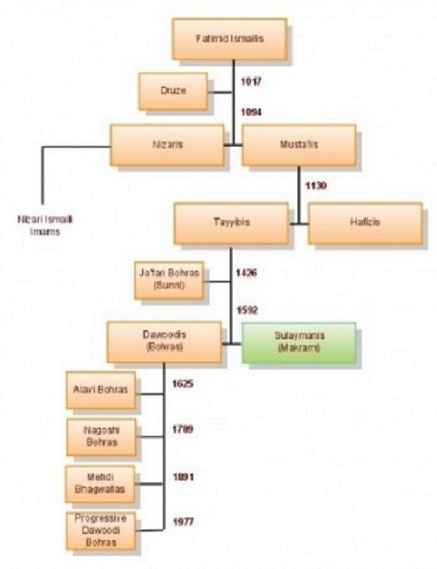
Mariya Taher, Brown Girl Magazine
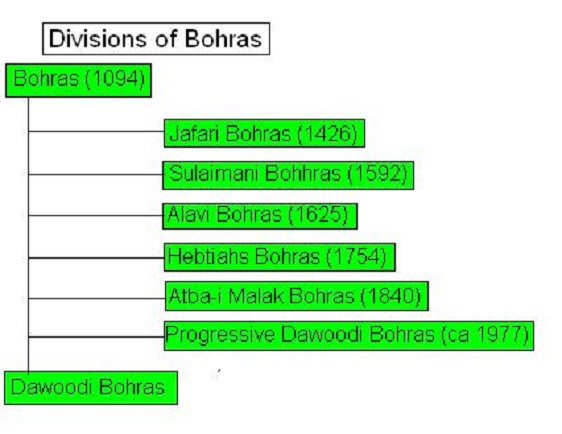
Islam Stack Exchange
This is a collection of articles archived for the excellence of their content. |
Indpaedia volunteers have tried to remove all materials that might be offensive to the Bohras or incorrect. If something still remains it may be reported as messages to the Facebook community, Indpaedia.com. Additional information and photographs may please be sent to this Facebook page. All information used will be gratefully acknowledged in your name.
Contents |
Bohra/ Bohora
A 1908 British account
This section was written in 1916 when conditions were different. Even in Readers will be able to edit existing articles and post new articles directly |
From The Tribes And Castes Of The Central Provinces Of India
By R. V. Russell
Of The Indian Civil Service
Superintendent Of Ethnography, Central Provinces
Assisted By Rai Bahadur Hira Lal, Extra Assistant Commissioner
Macmillan And Co., Limited, London, 1916.
NOTE 1: The 'Central Provinces' have since been renamed Madhya Pradesh.
NOTE 2: While reading please keep in mind that all articles in this series have been scanned from the original book. Therefore, footnotes have got inserted into the main text of the article, interrupting the flow. Readers who spot these footnotes gone astray might like to shift them to their correct place.
CONTENTS:
1. Origin of the sect. 4. BoJira graveyards. 2. Their religious tenets. 5. Religious custotns. 3. The Mullahs. 6. Occupatio7i. 7. Houses and dress. Bohra,
_Bohra, Bohora._ [388]—A Muhammadan caste of traders who come from Gujarat and speak Gujarati. At the last census they numbered nearly 5000 persons, residing principally in the Nimar, Nagpur and Amraoti Districts, Burhanpur being the headquarters of the sect in the Central Provinces. The name is probably derived from the Hindi _byohara_, a trader. Members of the caste are honorifically addressed as Mullaji.
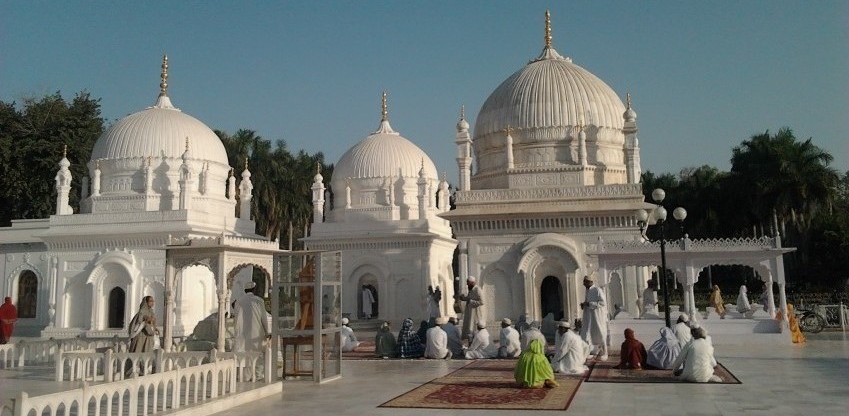
Mariya Taher, Brown Girl Magazine
According to the received account of the rise of the Bohras in Gujarat a missionary, Abdulla, came from Yemen to Cambay in A.D. 1067. By his miracles he converted the great king Sidhraj of Anhilvada Patan in Gujarat, and he with numbers of his subjects embraced the new faith. For two centuries and a half the Bohras flourished, but with the establishment of Muzaffar Shah's power (A.D. 1390-1413) in that country the spread of Sunni doctrines was encouraged and the Bohra and other Shia sects suppressed.
Since then, with gradually lessening numbers, they have passed through several bitter persecutions, meeting with little favour or protection, till at the close of the eighteenth century they found shelter under British rule. In 1539 the members of the sect living in Arabia were expelled from there and came to Gujarat, where they were hospitably received by their brethren, the headquarters of the sect being thenceforward fixed at Surat.
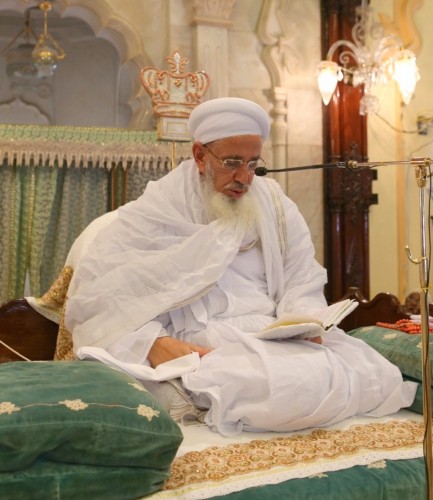
Mariya Taher, Brown Girl Magazine
(^ This article is largely based on Muhammadans of Gujarat, and on a Mr. F. L. Farldi's full description of paper by Mr. Habib Ullah, pleader, the sect in the Bombay Gazetteer, Burhanpur.)
The Bohras are Shias of the great Ismailia sect of Egypt. The Ismailia sect split off from the orthodox Shias on the question of the succession to the sixth Imam, Jafar Sadik, in A.D. 765. The dispute was between his eldest son's son Ismail and his second son Musi, the Ismailias being those who supported the former and the orthodox Shias the latter. The orthodox Shias are distinguished as believers in twelve Imams, the last of whom is still to come. The Ismailias again divided on a similar dispute as to the succession to the Khalifa Almustansir Billah by his eldest son Nazar or his younger son Almustaali. The Bohras are descended from the Mustaalians or supporters of the younger son and the Khojas from the Nazarians who supported the elder son.
All these distinctions appear somewhat trivial.
Gujarat contains two classes of Bohras : the traders who are all Shias and are the only immigrants into the Central Provinces, and a large class of cultivating Bohras who are Sunnis. The latter may be the descendants of the earliest converts and may have been forced to become Sunnis when this sect was dominant in Gujarat as noticed above, while the Shias are perhaps descended from the later immigrants from Arabia. The Shia Bohras themselves are further divided into several sects of which the Daudi are the principal. Mr. Farldi writes of them : ' " They are attentive to their religious duties, both men and women knowing the Koran. They are careful to say their prayers, to observe Muharram as a season of mourning and to go on pilgrimage to Mecca and Kerbala.
They strictly abstain from music and dancing and from using or dealing in intoxicating drinks or drugs. Though fierce sectarians, keenly hating and hated by the regular Sunnis and other Muhammadans than those of their own sect, their reverence for Ali and for their high priest seems to be further removed from adoration than among the Khojahs.
They would appear to accept the ordinary distinctions of right and wrong, punishing drunkenness, adultery and other acts generally considered disgraceful. Of the state beyond death they hold that, after passing a time of freedom as evil spirits, unbelievers go to a place of torment. Believers, but apparently only believers of the Ismaili faith, after a term of training enter a state of perfection.
(^ Bombay Gazetteer, AInhammadans of Gujarat, p. 30. Sir H. T. Cole- brooke and Mr. Conolly thought that the Bohras were true Shias and not Ismailias.)
Among the faithful each disembodied spirit passes the term of training in communion with the soul of some good man. The spirit can suggest good or evil to the man and may learn from his good deeds to love the right ; when the good man dies the spirits in communion with his soul are, if they have gained by their training, attached to some more perfect man, or if they have lost by their opportunities are sent back to learn ; spirits raised to a higher degree of knowledge are placed in communion with the High Priest on earth ; and on his death are with him united to the Imams, and when through the Imams they have learnt what they still require to know they are absorbed in perfection.
Except for some peculiarities in their names ; that they attach special importance to circumcision ; that the sacrifice or alsikah ceremony is held in the Mullah's house ; that at marriage the bride and bridegroom when not of age are represented by sponsors or ivalis ; that at death a prayer for pity on his soul and body is laid in the dead man's hands ; and that on certain occasions the High Priest feeds the whole community—Bohra customs do not so far as has been ascertained differ from those of ordinary Muhammadans. " Their leader, both in things religious and social, is the
3. The head Mullah of Surat. The ruling Mullah names his successor, generally, but it is said not always, from among the members of his own family. Short of worship the head Mullah is treated with the greatest respect. He lives in much state and entertains with the most profuse liberality. On both religious and civil questions his authority is final. Discipline is enforced in religious matters by fine, and in case of adultery, drunkenness and other offences, by fine, excommunication and rarely by flogging. On ceremonial occasions the head Mullah sits on his throne, and in token of his power has the flyflapper, chauri, held before him. As the Bohras enter they make three prostrations, salaams^ close their hands and stand before him. To such as are worthy
he says ' Be seated,' to others ' Stand.' Once a year, on the 1 8th Rajjab, every Daudi lays his palm within the head Mullah's hand and takes an oath to be faithful. On this day when he goes to the mosque the Bohras are said to kiss the Mullah's footsteps and to apply the dust he treads to their heads and eyes." Each considerable settlement of the sect has a deputy Mullah of its own.
4. Bohra Thc Sahadra or burial-place of the Bohras at Burhanpur graveyards, contains the tombs of three of the Surat Mullahs who happened to die when they were at Burhanpur. The tombs are in shell-lime and are fairly handsome erections. The Bohras support here by voluntary subscription a rest-house, where members of the sect coming to the city can obtain free board and lodging for as long as they like to stay. Mr. Conolly says of their graveyards : ^ " Their burial-grounds have a pleasing appearance, the tombs being regularly arranged in streets, east and west. The tombs themselves, which are, of course, north and south, the corpse resting on its right side, differ in no respect from those of Sunnis, with the exception of a small chirdgh takia or lamp-socket, cut out of the north face, just like the cavity for the inscription of our own tombs." 5. Reii- Of their religion Mr. Kitts writes : - "In prayers they gious differ both from Shias and Sunnis in that they follow their customs. ' Mullah, praying aloud after him, but without much regularity of posture.
The times for commencing their devotions are about five minutes later than those observed by Sunnis. After the midday and sunset supplications they allow a short interval to elapse, remaining themselves in the mosque meanwhile. They then commence the afternoon and even- ing prayers and thus run five services into three."
Mr. Thurston notes that the Bohras consider themselves so superior to other sects that if another Muhammadan enters their mosque they afterwards clean the spot which he has occupied during his prayers.^ They show strictness in other ways, making their own sweetmeats at home and declining to eat those of the Halwai (confectioner). It is said also that they will not have their clothes washed by a Dhobi, nor wear shoes made by a Chamar, nor take food touched by any Hindu. They are said to bathe only on Fridays, and some of them not on every Friday. If a dog touches them they are unclean and must change their clothes. They celebrate the Id and Ramazan a day before other Muham- madans.
("^ J.A.S.B. vol. vi. (1837), part ii. ^ Cas/es and Tribes of Southern p. 847. India, art.
Bohra. '^ Berar Census Report ( 1 8 1 8), p. 70.)
At the Muharram their women break all their bangles and wear new bangles next day to show that they have been widowed, and during this period they observe mourning by going without shoes and not using umbrellas. Mr. Conolly says of them : " I must not omit to notice that a fine of 20 cowries (equally for rich and poor) punishes the non-attendance of a Bohra at the daily prayers. A large sum is exacted for remissness during the Ramazan, and it is
said that the dread of loss operates powerfully upon a class of men who are particularly penny -wise. The money collected thus is transmitted by the Ujjain Mullah to his chief at Surat, who devotes it to religious purposes such as repairing or building mosques, assisting the needy of his subjects and the like.
Several other offences have the same characteristic punishment, such as fornication, drunkenness, etc. But the cunning Bohras elude many of the fines and daily indulge in practices not sanctioned by their creed ; thus in their shops pictures and figures may be purchased though it is against the commandments to sell the likeness of any living thing." It has been seen that when a Bohra is buried a prayer for pity on his soul and body is laid in the dead man's hands, of which Mr. Faridi gives the text. But other Muhammadans tell a story to the effect that the head Mullah writes a letter to the archangel Gabriel in which he is instructed to supply a stream of honey, a stream of milk, water and some fruit trees, a golden building and a number of houris, the extent of the order depending on the amount of money which has been paid to the Mullah by the departed in his lifetime ; and this letter is placed beneath the dead man's head in the grave, the Bohras having no coffins.
6. Occupation.-
The Bohras indignantly repudiate any such version of the letter, and no doubt if the custom ever existed it has died out. The Bohras, Captain Forsyth remarks, though bigoted religionists, are certainly the most civilised and enterprising perhaps also the most industrious class in the Nimar District. They deal generally in hardware, piece-goods and drugs, and are very keen traders. There is a proverb, " He who is sharper than a Bohra must be mad, and he who is fairer than a Khatri must be a leper." Some of them are only pedlars and hawkers, and in past times their position seems to have been lower than at present. An old account says : ^ " The Bohras are an inferior set of travelling merchants.
The inside of a Bohra's box is like that of an English country shop ; spelling-books, prayer-books, lavender- water, soap, tapes, scissors, knives, needles and thread make but a small part of the variety." And again : "In Bombay the Bohras go about the town as the dirty Jews do in London early and late, carrying a bag and inviting by the same nasal tone servants and others to fill it with old clothes, empty bottles, scraps of iron, etc."" 7. Houses Of their method of living Malcolm wrote : ^ " I visited and dress, several of the houses of this tribe at Shahjahanpur, where a colony of them are settled, and was gratified to find not only in their apartments, but in the spaciousness and cleanliness of their kitchens, in the well-constructed chimney, the neatly arranged pantries, and the polished dishes and plates as much of real comfort in domestic arrangements as could be found anywhere.
We took the parties we visited by surprise and there could have been no preparation." The Bohras do not charge interest on loans, and they combine to support indigent members of the community, never allowing one of their caste to beg. The caste may easily be known from other Muhammadans by their small, tightly wound turbans and little skull-caps, and their long flowing robes, and loose trousers widening from the ankle upwards and gathered in at the waist with a string. The women dress in a coloured cotton or silk petticoat, a short-sleeved bodice and a coloured cotton head-scarf When they go out of doors they throw a dark cloak over the head which covers the body to the ankles, with gauze openings for the eyes. 1 Crooke's edition of i/c;Z'j-^;/-y<5/;i(7«, ^ Memoir of Central India, ii. p. art. Bohra. in. 2 Moor's ///«(/« Infanticide, p. 168.
Bohra/Bhora surnames
(From People of India/ National Series Volume VIII. Readers who wish to share additional information/ photographs may please send them as messages to the Facebook community, Indpaedia.com. All information used will be gratefully acknowledged in your name.)
Titles: Ariff, Asmal, Calcuttawala, Chithiwala, Jalotrawala, Johar, Patherya, Sachee, Salenjee, Taiabbahai, Timor,
Tobanwala [West Bengal]
- Sections: Bachguar, Balai, Batham, Bhatiya, Charwar, Dasati, Deswal, Kachhi, Kamar, Kasib, Khangar, Kundal,
Maheswari, Nagar, Samel, Sundi, Syani [W. Crooke]
Who are the Bohras?
The Bohras are a business community with its predominant base in the west-coast state of Gujarat in India. Dawoodi Bohras are a sect of the Fatimid Shia school of thought and about one million people claim to follow this sect of Islam all over the world.
Bohra is not a religion by itself. It is a Gujrati-speaking caste originating from the Kuch area of India. These were predominantly a business community, some of whom converted to Islam, and that is how a community amongst them came to be known as Dawoodi Bohras. There are many Hindus who are Bohras, and most of the Dawoodi Bohras are converts from Hinduism in the early times. There is no more propagation of Islam in Bohraism, thus there are no more converts.
The Dawoodi Bohras believe in the imamate of the progeny of Imam Ali ibn Abi Taalib, and believe all the way upto the 21st imam. Then they have a system of Dais, and Syedna Burhanudeen is the 52nd Dai in succession.
The Syedna is their undisputed spiritual leader. The Syedna and his family and mission are based in Bombay, and run the organization by having a permanent ambassador of theirs in probably every county and city in the world, wherever the Bohras reside! It is a very well organized system, whereby all the zakaat, and all other funds in the names of sabeel, wajebaat, khums, etc. are collected.
The difference between Bohras and other Shias
What is the difference between Shia and Bohra People?
Bohras are a subsect of Ismaili Shia Islam and have a cult like following, are very cautious about not letting their teachings to get into public there are many bohra sects, the major one is Dawoodi Bohra (en.wikipedia.org/wiki/Dawoodi_Bohra – Islam Jun 18 '13 )
The major difference in any of the Shia sects is the succession issue, you would find new Shia sects being formed after the demise of their respective Imam with each party claiming that they have the correct Imam and perform takfeer on the other sects with different set of Imams.
The Ismailis were split from the now mainstream Shias over the succession issue of Imam Jafar Sadik. The Ismailis took Ismail bin Jafar as their Imam whereas the 12ers(Ithna Ashari Shia) took Musa Kazim bin Jaffar Sadik as their Imam. Continuing with the Ismaili Imams, Ismailis got split into Druze and mainstream Ismaili then further down the line they again got split into Nizaris(Aga Khani\ Khoja, the only sect to have the Imam to this date) and Musta'ali branches , the Mustaali branch ended at Tayyab, who went into occultation. Now the Imamless sect was governed by what they call as Daee Mutlaq (Unrestricted Missionary) who are the alleged representatives of the Imam who is thought to be hidden somewhere. Again there were many splits in the hierarchy of Daee, which led the formation of dozens of Bohra sects :
The current major Bohra sect called the Dawoodi Bohra is again facing the same succession issue of the Daais as the position of Daee holds great position of Control and power, abundant wealth and lavish lifestyle.
Doctrinal differences between the mainstream 12er Shias and Bohras are that the Bohras belive in an esoteric interpretation of Quran and Islam , wherein each verse\ words of the Quran can be given completely different meanings. This may hold true even for the mainstream sects albeit with a relatively less esotericism.
eg: In Surah Fatiha , they assign meanings to individual words of the Ayat, like arRahman= Hasan, arRaheem = Husain , Malike Yawmiddeen= Imam
Most of the mainstream scholars have declared them to be disbelievers due to their ardent worship of their leader who is called Daae , the Daee of this sect calls for his devotees to prostrate to him and there is frequently sung poetry in their Majlis dedicated to the Daee :
Sajda tujhe wajib hai, tu masjid e azam hai,
hajj hai teri pabosi, tu kaaba- e- alam hai
dum tera bharunga main, tausif karoonga main,
ae shah-e-zaman jab tak, ye dum mein, mera dum hain
[Indpaedia has removed several paragraphs from this article, which may be viewed at the hyperlink given above. The above verse can be the view of one poet, not necessarily of the whole community.]
Dawoodi Bohras believe in the basic faith of unity in Islam(Tauheed), and Hazrat Mohammad (SAW) as thelast prophet on earth. Hazrat Ali (RA) is the first Imam, who, after the death of Hazrat Mohammad(SAW), protected the religion and was the first Caliph who ruled and established the peace among the people by following the norms of Islam.
However, Dai, is the spriritual leader of Dawoodi Bohras, the word Prostrating is wrongly used in the above context, as Dai is the person who teaches the basic principles of Islam and binds the people of the community to strictly follow the Islamic teachings and principles. He, himself is prostrated to Almighty Allah, as the concept of the unity of God in Islam. Dawoodi bohras are bend down towards their spiritual leader for the fact that he has bind themselves united as one community under the preaching of Islam.
A young Bohra student in the USA explains her community
Mariya Taher, Brown Girl Magazine Growing Up In The Dawoodi Bohra Muslim Community of Shia Islam
Mariya Taher
I come from a small Islamic Sect: the Dawoodi Bohra Muslim community based primarily out of Mumbai, India. They are an even smaller minority within the minority of the Muslim population This is the tradition in which I was raised.
Within the Muslim community, there are two main branches: Sunni Islam and Shia Islam. This original Sunni/Shia split arose in the wake of a dispute after the death of the Prophet Muhammad over who should lead the Muslim community. Sunnis believed that Abu Bakr, the father of Muhammad’s wife Aisha, was the rightful successor, and that the method of electing leaders should be based on the consensus of the Ummah (The Muslim community). The Shias, on the other hand, believe that Ali, the son-in-law of the Prophet Muhammad and his descendants were divinely ordained to lead the Islamic community.
These branches are further sub-divided into multiple sects. The Dawoodi Bohras are a member of the Shia branch. [On this page is] a diagram showing the split and emergence of the Dawoodi Bohras.
Dawoodi Bohra1
Shia Muslims believe that the Prophet’s descendants are the rightful leaders of the Muslim community. This line of successors were given the title of Imam. For Sunnis, an Imam is generally the person who leads prayers at a mosque however, Shias give this title a significantly greater weight. Shias see the Imam as the one who has inherited the responsibility and role of guidance for the entire Muslim community. For Shias, there can only be one supreme authority or Imam at a time.
Each Imam succeeds one another through an explicit designation, known as nass. This claim to having received nass from the previous Imam has led to a number of succession disputes that still occur to the present day within the Shia community, which have also led to the further formation of several sects within the Shia.
One such lineage is the Ismaili community, to which the Bohras also belong to. However, here again, the Ismailis are divided further into multiple groups. The Bohras belong to the Musta’li Ismailis, and believe that the current Imam is in hiding from his enemies, and has been for centuries. Nonetheless, the Bohras believe that this Imam is still physically present in this world.
Since the Musta’li Imam is in hiding, the Bohras have invoked a sub-hierarchy of spiritual leadership which they inherited from the rule of the Fatimids, an important Shia dynasty based in Egypt in the 10th to 12th centuries. These rulers of Cairo were considered Imams. Beneath them in the religious hierarchy were the da’is, emissary-missionaries who were responsible in spreading this version of Islam to the world.
Today, in the physical seclusion of the Imam, the Musta’li Ismailis have been led by a series of these da’is, the most important of which is the da’i al-mutlaq. This is a position that is now occupied by Syedna Mufaddal Saifuddin, who provides guidance to the Dawoodi Bohra community. The da’i al-mutlaq have led the community for 53 successive generations.
Syedna Mufaddal Saifuddin
The da’i al-mutlaq of the Dawoodi Bohra community, Syedna Mufaddal Saifuddin.
What’s important to understand here is that Shia Muslims are a diverse cohort whose communal histories, geographies and relation to power, have led to great diversity amongst them in their practice and theologies. Most studies suggest that Shia Muslims make up about 15 to 20 percent of the world’s 1.6 billion Muslims. Within this portion of Shia Muslims, Dawoodi Bohras are said to have one million followers worldwide, a very small chunk within the larger Shia community.
(Mariya Taher did an MFA in Creative Writing at Lesley University, MA. She received her Masters in Social Work from San Francisco State University and her BA from the University of California Santa Barbara, where she majored in Religious Studies and double minored in Global, Peace, and Security & Sociocultural Linguistics. Prior to attending Lesley University, she worked in the gender violence field for seven years. She has contributed articles to Solstice Literary Magazine, Global Voices, The Express Tribune, The San Francisco Examiner, BayWoof, and the Imagining Equality Project put together by the Global Fund for Women and the International Museum of Women)
Syedna
Succession
Rizwan Mawani Exploring the Diversity and Complexity of the Muslim World
The passing of Syedna Muhammad Burhanuddin, the 52nd da'i al-mutlaq of the Dawoodi Tayyibi Musta'li Ismailis, in Mumbai left a community of approximately one million adherents mournful and bereaved. During his 102-year life, he continued the work of the previous da'i, his father Syedna Taher Saifuddin who passed away in 1965, contributing to the establishment of a number of educational institutions for the promotion of literacy and higher education as well as hospitals and community mosques. At 53, when he inherited his father's mantle, Syedna Muhammad Burhanuddin continued the responsibility of providing guidance in both spiritual and worldly matters for a contemporary world, a tradition also entrusted to his ancestors, all of which trace their lineage to Prophet Muhammad, Islam's final Messenger. In doing so, the da'i also helped to ameliorate the status of the community's less advantaged members and is succeeded by his 70-year-old son Syedna Muffadal Saifuddin, who has inherited the mantle of spiritual leadership of the community.
This small but scattered Shi'a Muslim community can be found throughout the world, but is concentrated in the Subcontinent and Yemen as a result of missionary activities that began in the 10th century during the reign of the Fatimid Caliphs in Egypt. Known more commonly as the Bohras, the Dawoodi branch of the Musta'li Ismailis are believed to have taken their more colloquial name from the Indic term "Vohra," a word possibly pointing to their caste-origins as Hindu merchants and peddler-traders before their adoption of Islam nearly a millennium ago.
For many, however, Shi'a Islam and its beliefs are difficult to grasp. Even Muslims outside the Shi'a persuasion are not always able to articulate or understand the ways in which models of leadership developed after the death of the Prophet Muhammad in the early part of the 7th century. Like Sunni Islam, Shi'a Muslims are a diverse cohort whose communal histories, geographies and relation to power, have led to great diversity amongst them in their practices and theologies. While estimates vary widely, most studies suggest that Shi'a Muslims make up about fifteen to twenty percent of the world's 1.6 billion Muslims. Although present in the majority of countries where Muslims live, they are concentrated in Iran, Azerbaijan, Iraq and Bahrain -- where they form majorities, as well as Yemen and Lebanon. There are also significant minorities in Turkey, Qatar, Pakistan, Afghanistan, Saudia Arabia, Tajikistan and India.
Amongst the Shi'a, there are three main interpretive schools -- the Ithna Asharis, the Ismailis and the Zaydis. All three share in a common belief and view of history that authority did not cease at the death of Prophet Muhammad, but continued through the divinely mandated designation of his cousin and son-in-law, Ali bin Abi Talib, who initiated a new era of hereditary leadership which continued through successive generations, and in whose care was invested both spiritual knowledge and temporal authority, which Shi'a Muslims believe was enacted by the Prophet at the behest of Divine Command.
While the majority of Muslims, those who later became known as Sunnis, subscribed to different models of leadership, they also considered members of the Prophet's family and particularly his daughter Fatima, Ali and their two sons, Hasan and Husayn as "People of the House" (ahl al-bayt), a term which carries with it both respect and gravitas. In both the beliefs of Sunni and Shi'a Muslims as well as other Muslim groups, it is the Prophet's immediate family who were the most authentic sources of knowledge about the Qur'an and, after Muhammad, the most qualified teachers of Islam. They were also considered to be the most trusted carriers, protectors and interpreters of the Prophet's sunnah, those words and actions ascribed to him.
For Shi'a Muslims, this responsibility and carriage continued in the line of successors to the Prophet known as the Imams -- a term that has a different significance and history than simply the designation given to the prayer leader at the mosque. Literally meaning "one who is in front of," the term Imam in Shi'a discourses has come to designate a hereditary leader of the Muslim community, who has inherited the responsibility and role of guidance after the death of the Prophet. In Shi'a Islam, there can only be one supreme authority or Imam at a time. Each Imam, is succeeded one after another, enacted by a form of explicit designation, known as nass.
Throughout Shi'a history, there have been a number of succession disputes surrounding the question of the rightful inheritance of the position of the Imam. This has led to a number of different Imamat lineages, which ultimately resulted in the formation of several Shi'a communities. The largest, by far, are the Ithna Asharis, named after the 12 Imams who succeeded the Prophet. The 12th Imam is believed to have entered an occulted state (ghayba) in the 9th century, but is still present in the world. Other than the Zaydis, most Shi'a Muslims believe that the Imam is necessary for the world to function and many refer to the present Imam as Saheb-e Zaman or Imam al-Waqt -- the Imam of the Age. Shi'a Muslims continue to invoke prayers in his name.
The second largest community are those of the Ismailis, to which the Bohras belong. The Ismailis are also divided into multiple groups. The largest of which are the Nizari Ismalis, whose present and 49th Imam is Prince Karim Aga Khan, a position he inherited in 1957 from his grandfather, Sir Sultan Mahomed Shah, Aga Khan. The Musta'li Ismailis, to which the Bohras belong, also believe their current Imam has been hidden from the view of his adherents since the 12th century. It is their 21st Imam that was last "revealed" to them. Nonetheless, for the Bohras, the Imam is still physically present in this world, but though as behind a curtain (satr), rather than occulted.
Since the Musta'li Imam is not easily accessible to the Bohras, they have invoked a sub-hierarchy of spiritual leadership which they inherited from the rulership of the Fatimids, an important Shi'a dynasty based in Egypt in the 10th to 12th centuries. These rulers of Cairo and founders of its Al-Azhar University, were not only Caliphs, but also Shi'a Imams. Under the Imams, lay an intricate series of da'is, emissary-missionaries who propagated the religion and administered it in the various regions which the Shi'a Ismailis had present. Today, in the physical absence of the Imam, the Musta'li Ismailis have been led by a series of these da'is, the most important of which is the da'i al-mutlaq. It is the da'i al-mutlaq, a position now occupied by Syedna Mufaddal Saifuddin, who provides guidance to the community, but also many believe, has access to the Imam-in-Hiding, during his period of inaccessibility -- which for the Musta'lis has now lasted 53 successive generations of da'is.
The Bohras are one branch of the Ismaili Muslims and the Dawoodis are one branch of the Bohras. The chart indicates the emergence of various Ismaili sub-groups, almost all of which have emerged from debates about legitimate succession. The numbers in brackets correspond to the dates in which these communities emerged.
Like the succession of Imams, the Bohra leader also designates his successor-da'i through the process of nass. In this case, the now-da'i was publicly announced by his predecessor and father on June 4, 2011, while in London. While the last several generations have seen the position of da'i inherited in the same family, this is not a requirement. In fact, the inheritance of the da'wa is based on a model by which the person most qualified in terms of knowledge and piety within the community inherits the role, as long as they also trace their lineage to the Prophet by way of the Shi'a Imams. The 51st da'i al-mutlaq, Taher Saifuddin, the grandfather of the present da'i, also publicly declared his successor when the latter was only 19, a position he only assumed three decades later. Like the lineage of Shi'a Imams, the Bohras have also seen a number of disputes around succession to the position of da'i, some of which took place very recently. In those communities, other leaders have inherited the supreme position.
For Bohra Muslims, the da'i al-mutlaq is the most intimate access that adherents can have to their Imam while he is in hiding, for within him is the Imam's grace, which helps to explain the kinds of attachment and fervor they feel towards him. While the institution of the da'wa continues in the present incumbent, the 102-year-old da'i who passed away in Mumbai during Friday's early hours will be mourned and remembered by the community as someone who brought them into the modern age and nurtured and cared for their well-begin for the last five decades. For anyone under the age of 50, this is the only da'i they had known and letting go of his physical self will be a difficult task in the days and months ahead.
Bohra women
How they dress
In Cairo’s 1,000-year-old Fatimid mosque, the Jamea ul Anwar, someone asked the spiritual leader Syedna Muhammad Burhanuddin (TUS) about the different ways that their Dawoodi Bohra women dressed when they came to the masjid. The year, according to community member Mustafa Jackwala, was 1979 and the discussion took place during the first Muharram congregation.
“We should encourage our people to wear what the royal family wears,” one of the Syedna’s sons is reported to have suggested, referring to the Qasr-e-Ali. But then, according to Jackwala, someone in the gathering objected to this idea, asking how it would be appropriate to allow ‘common’ people to wear what the royal family wore? The Syedna’s son replied simply: We want our people to look like us.
The women of the royal family used to wear the hijab, as decreed by the late Syedna Taher Saifuddin (AQ), who led the Dawoodi Bohras from 1915 to 1965. After the discussion in the mosque that day, though, his son took it upon himself to examine the sartorial identity of his people.
For example, in India the women preferred a cotton or silk scarf over a matching silk bodice and petticoat under a dark silk burqa. And the women from the royal family draped themselves in elaborate saris inside the confinement of the Saifee Mahal in Bombay. Even distant Dawoodi Bohra communities in Sri Lanka and Africa favoured saris and skirts with a shawl to cover their heads. Subsequently, the Syedna’s wife came up with the design for the rida. It consists of a poncho-like top with the pardi and a flap to cover the face, and the lenga or loose-fitting skirt underneath. The word means ‘the chador of Bibi Fatima’, the daughter of Prophet Mohammad (PBUH).
The history of this discussion is mentioned in a 2011 thesis on the rida’s contribution to the textile cottage industry of Pakistan by Zahra Arif Lotia at the Indus Valley School of Art and Architecture. With a few years of the declaration that the Dawoodi Bohra women adopt the rida, it became a common sight.
“No changes can be made to the original cut because of the religious significance,” explains Yousuf Petiwala, who has sold them from his Jamali Shaadi Shop, in Karachi’s Najmi Market in Saddar for eight years. Indeed, today, the women of this particular denomination of Shia Islam can be instantly recognised the world over for their uniform way of appearing in public. As they say, you are what you wear. And with the rida, the outer garment became a symbol of their religious identity.
Rida Ritual
No matter what your age, the rida is part of a woman’s daily wear after her misak ceremony of initiation. Petiwala maintains that once a girl comes of age it is “compulsory” to wear the rida before leaving the house. But Aquila Aftab, who has been designing ridas for almost 27 years, disagrees, saying, “It is worn to a masjid… and it’s a very personal thing.”
The misak ceremony introduces a young woman to the rida. “It’s a reason for the entire family to get together and celebrate over a Bohra-style feast in a thaal,” adds Farida Yunus Marvi, who has 25 years of rida-designing experience.
But the ceremony has more to it than just the rida appeal. “The misak, more than anything, is a little ceremony welcoming the consciousness towards the practice and pursuit of the religion,” says Zahra Rangoonwala, the creative manager at Team::ants who had her own ceremony at the age of 13. Her mother affectionately stitched her first rida which was cut out of a pearly white, silky fabric with pink and lilac flower details — purple being her favourite colour. “I wanted to start wearing a rida already, and often practiced doing my pardi on my mom’s rida,” she recalls.
For all-female gatherings, a rida-cum-jori is preferred, as you can simply remove the pardi and wrap a dupatta around yourself.
Dear Designs
Farida Yunus Marvi says that all you need is 5.5 yards of fabric for a rida. The beauty of its architecture is that you can turn any type of fabric into one. Although Petiwala says that the women generally avoid see-through materials such as georgette. The type of fabric is mostly chosen by occasion; for weddings you can take your pick from a wide array of silk fabrics or jamavar and stick to cotton or wash-and-wear for everyday ridas.
Along with fabric, the colour selection is also closely allied with the shades of the season. “During summer, pastels and chikkun fabric are in vogue,” adds Petiwala.
The designs are mostly seasonal and revolve around the latest shalwar kameez trend. “Pick any shalwar kameez catalogue and we’ll make a copy rida out of it… same print and embroidery,” says Petiwala, who entered the business in his mother’s footsteps. Tahera Petiwala stitched ridas at home on a small scale. “Since we don’t have a catalogue, customers point out the designs and we duplicate them,” he says. Marvi will even rip off the border from an old sari or shalwar kameez to make a rida for some of her clients.
But not all designers wish to flip through magazines and catalogues to unleash their creative streak. “My designs stem from the multicoloured ribbons and prints that I buy,” says Aquila Aftab. “I lay them out and match them.” She started out by stitching her own clothes after college as a hobby, and soon transformed her favourite pastime into a full-time career. Her daughter, Farida Adnan, provides some valuable assistance. Aftab and Petiwala also offer a broad range of designs that include salma-sitara work and screen printing.
Wedding Wear
Marvi caters to high-end customers who sometimes approach her to design their wedding ridas or joris. “On average it takes me two months to design and stitch a wedding jora because of the intricacy of the work that is usually done by hand,” she says. “But if you need it urgently, I’ll have it ready within a month.” Her bridal rida designs range between Rs8,000 to Rs10,000 and joris can cost around Rs500,000, depending on how much you are willing to fork out. The ones Aftab designs are priced between Rs2,500 and Rs10,000 and can be made available within two weeks. “Ridas are preferred when the ceremony is taking place inside a masjid, otherwise brides often opt for lengas,” she says, having worn a jori for her own wedding ceremony.
At Jamali’s Shaadi Shop, a rida can be churned out much faster and at a lower rate, starting from Rs2,000. “It takes me one day to stitch a regular rida if I work from morning to night,” he says.
Although wedding season may seem the busiest month for designers, Marvi gets orders for exclusive ridas especially during Ramazan, for Lailat-ul-Qadr that falls in the last 10 days of Ramazan and for Syedna Mohammad Burhanuddin’s birthday celebrations. It’s when every girl wants to outdo the one sitting next to her inside the Jamaatkhana.
The trend of wearing fashionable ridas for Lailat-ul-Qadr has, however, changed in the recent past. “It is fading because everyone realises that wearing such a fancy rida makes it difficult to pray all night,” says Rangoonwala. Elaborately detailed ridas are now set aside for weddings or Eid.
While a rida’s original purpose may have been to cover, it has easily morphed into a fashion symbol that is frequently associated with a level of comfort. Aftab, for one, confesses that it is perhaps the most convenient apparel. “You don’t have to wear a dupatta over your head and then constantly worry about it slipping,” she says.
No matter what their motivation to wear one, Dawoodi Bohra women all know that the rida makes them stand out. Rangoonwala often gets curious looks when traveling abroad. Sometimes she is even stopped with questions. “I end up replying that it’s just a creatively done ‘burqa’ or ‘abaaya’,” she says. “I definitely feel proud about being [Dawoodi] Bohra and wearing a rida.
3 in 4 Bohra girls subjected to genital mutilation
Every three in four girls from the Bohra community in India are subjected to genital mutilation a study has found.
In order to capture the horror of the procedure, it highlights the case of an 8-year-old girl who was rushed to a hospital by her parents after they realised that excessive bleeding from a botched circumcision had put her life in danger. Resident of a prominent city, this girl had to be stitched up in a hospital 12 hours after the ‘khatna’ procedure by a traditional circumciser who told the mother of child that in her “experience of 35 years this was the first case that had got spoilt”.
A survivor of Female Genital Mutilation (FGM), the little girl’s traumaticexperience lastMayfindsspacein a study titled ‘The Clitoral Hood a Contested Site: Khafd or Female Genital Mutilation/Cutting (FGM/C) in India’. Brought out by a network of survivors ‘We Speak Out’ and Nari Samta Manch, the study is based on interviews with 94 people(83 women and 11men). As many as 81 women in the survey had been subjected to ‘Khafd.’ The age of those surveyedwas between 17 and 85.
The study states that 75% of daughters (aged 7 and above) of all respondents in the study were subjected to FGM/C. Nearly 33% of women subjected to Khafd in the study believe FGM/C has negatively impacted their sexual life. The writers of the report demanded an anti-FGM/C legislation primarily targeting providers of Khafd, warning that India runs the risk of becoming a hub for FGM/C of expat and foreign Bohra girls.
Reacting to the report, Syedna Mufaddal Saifuddin, the spiritual head of the Dawoodi Bohras said, “We practise a harmless cultural and religious practise called khafz. Khafzis notFGM. Few with vestedinterestshave misguided everyone against the community that is really sad.”
Festivals of the Community
The various festivals are:-
New year- On the first night of the year i.e. the first of Muharam, the thal is decorated with different types of dishes and the whole family eats together. 30-40 dishes are served. These include various fruits, starters, sweets, main courses, etc. relatives send food to each other as well.
Ashurah- the first 10 days of Muharam are marked as a mourning period during which people set up small stalls, Sabils, in which food is distributed. Various types of sherbets, savory items, packaged food, etc is distributed.
The 10th day of Muharam is Ashurah, the day on which the prophet’s grandson passed away. On this day, the Dawoodi Bohras fast and break their fast by eating bhajji (chawli leaves) and roti. For dinner, khichda is eaten.
Id-e-Milad un Nabi- it is the birth anniversary of Prophet Mohammad. On this day, every household makes kalamra and on the night of the birthday there is a community dinner.
Shab-e-Barat-this day is celebrated in the memory of those who are no longer with us. Dawoodi Bohra households make lachka and samosas on this day.
Ramzan/ Ramadan is the month during which the Quran came down to the earth. Thus, this month is celebrated by maintaining fasts for all 30 days. The Muslims wake up an hour and a half before sunrise and have their breakfast, Sehri. Especially during Ramadan, certain dishes like sutarfeni, and fibrous food is eaten as the person is going to keep the fast till sunset. The fasts are broken at sunset by either tasting salt or by eating dates. Now the iftar is eaten. Fruits and various savory items are eaten. After the iftar, dinner is eaten.
Id-ul-fitar-After 30 days of Ramadan, id-u-fitar is celebrated. On this day, relatives go to each others’ houses and sheer kurma is served. The whole family gets together and a lavish lunch is eaten.
Bakr-id- Meat preparations from the goat that is sacrificed are made in the house, along with that malida is prepared.
Sitabi-this is a meal where a certain number of women of around the thal (generally odd numbers-7, 9, 11,). It is done in the memory of the prophet’s daughter, Fatema-tuz-zahra. The first course of this meal is always gol (jaggery) and roti with a savory preparation.
Birthday- as per the lunar calendar, every Dawoodi Bohra has a second birthday. On this day, thuli and chana-bateta are made along with dal-chawal-pallidu.
This same meal is prepared on the day of someone’s nikhah (wedding ceremony).
Faizul Mawaidil Burhaniya/ Community Kitchen
[From the archives of the Times of India]
Vijaysinh Parmar
Hundreds of women from the Dawoodi Bohra community have been unshackled from the hearth thanks to the ‘community kitchen’, a concept floated by their religious head DrSyedna Mohammed Burhanuddin about four years ago in Mumbai. The community high priest promoted this idea so that women could devote time for religious activities, focus on children’s education or even start small businesses.
Bohras in Rajkot, the main business centre in the region, found the idea appetizing. There are about 2,200 Bohra Muslim families in the city and nearly half of them have started getting tiffins from the community kitchens. The families contribute a fixed sum every month and the food delivered is enough for two meals.
2016: Helped during the demonetisation crunch
Mohammed Wajihuddin, Bohra kitchen helps ease money woes, Nov 17 2016 : The Times of India
Unlike many of her neighbours, Nagpada housewife Durriya Hinglawala has not queued up outside an ATM or a bank since the cash crunch hit the country on November 8. She says she doesn't need to worry much about non-availability of enough money in the house as one of the most essential thing that money can buy--food--comes from the community kitchen.
Hinglawala's is one of 7,300 Dawoodi Bohra households in India and 13,500 in Mumbai, which bank on Faizul Mawaidil Burhaniya (FMB), the community kitchen patronized by the community's spiritual leader Syedna Mufaddal Saifuddin, for one nutritious meal a day. “It is Syedna's earnest desire that every community member eats at least one nutritious meal daily . The scheme operates globally and at the current cash crunch in the country our community members are least affected as far as arranging for food is concerned,“ said a spokesperson of FMB.
FMB is the brainchild of late Syedna Mohammed Bur hanuddin who decided a couple of years ago that no Bohra anywhere in the world should go to bed hungry . His successor, Syedna Mufaddal Saifuddin, the spokesperson added, has carried forward the late Syedna's message as FMB has relieved thousands of Bohra women of the task of cooking. Now, Bohra housewives focus on learning other skills and contribute to the family income. “We have a physically disabled member in our family and I have to take care of him constantly . FMB has provided a great relief as I don't have to cook our meal,“ said Hinglawala.
Run with the voluntary donations from community members, the kitchen takes care that equality is maintained in quality and quantity of the food cooked and distributed. “It is gratifying to see that the food that comes to my place is same in quality and quantity which has been sent to a richer member than me. At a time when you have reports of people going hungry due to demonitisation of Rs 500 and Rs 800 notes, the Bohras are assured of getting their tiffin in the morning between 8 am and 9 am,“ said Byculla resident Yusuf Savliwala.
See also
Bohra
